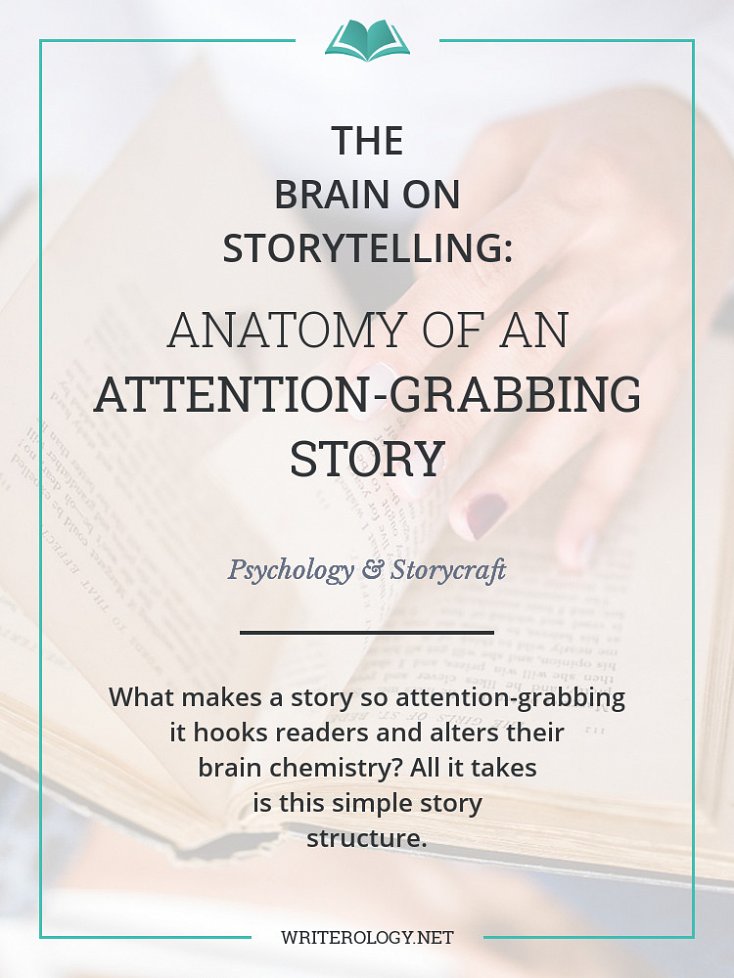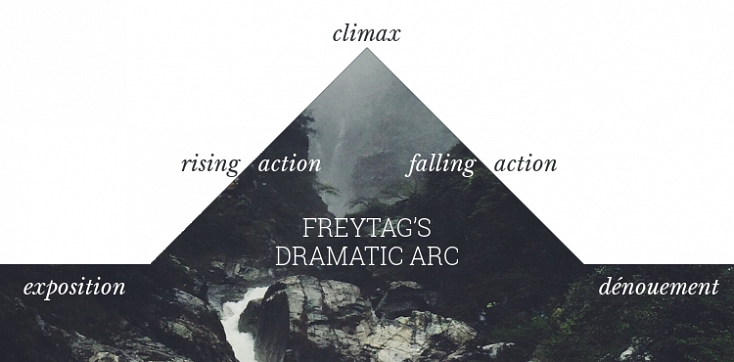The Brain on Storytelling: Anatomy of an Attention-Grabbing Story
What makes a story so attention-grabbing it hooks readers and alters their brain chemistry? All it takes is simple story structure.
Story—it’s something we all crave, whether it’s a book or a film or a tale your best friend told you over tea.
Dramatic stories help us to connect with others and understand and appreciate our own lives. And if you can harness their power, you can create an emotional connection between the reader and the characters that resonates beyond the pages.

Dear reader: Links marked by an asterisk (*) are affiliate links. You can learn more about my affiliate policy here.
In the first post of The Brain on Storytelling series, Building Emotional Connections, we looked at the research of Professor Paul Zak and explored the psychological and neurological power of storytelling. Professor Zak identified a useful equation for writers seeking to establish an emotional bond with their readers:
ATTENTION + EMPATHY = EMOTIONAL CONNECTION
In other words, people who pay attention to a story, feel distressed at the events that occur and feel empathetic towards the characters are far more likely to experience a deep emotional connection. Now you just have to make sure each element of the equation is present in your story, starting with the first part: attention.
Transportation—that magical moment when readers experience the characters’ emotions for themselves—can only happen if the story holds their attention. How can you ensure you do that? Run an electrical current of tension through the story and keep cranking it up. Tension and conflict create distress, which is linked to cortisol, the neurochemical behind the attention part of the emotional connection equation.
Story structure provides a framework to guide the ups and downs of tension, conflict and pace. Through applying this framework to your plot, you can make the story more gripping, more emotionally resonant and altogether more interesting for the reader.
So… which story structure do you use? (Wait, there’s more than one?)
The Dramatic Arc
Professor Zak recommends using Freytag’s dramatic arc to guide the level of tension in the story and create conditions that lend themselves towards an emotional connection. This type of story structure consists of five acts—exposition, rising action, climax, falling action and dénouement—which, when depicted visually, form Freytag’s Pyramid.

Let’s take a closer look at each act.
Exposition
This is where your story starts. Your characters, the setting and the basic conflict are introduced and the mood of the story is established. At this point, tension is low—that is, until the inciting moment, the event without which there would be no story, goes down and propels your plot into the next act.
Rising Action
This is where things start to get difficult for your characters. The basic conflict introduced in the exposition is complicated as more obstacles interfere with your characters achieving their goals. The events of this act ultimately lead up to the climax, making this part one of the most important in the story. Accordingly, the tension steadily builds throughout the rising action act, which lets you keep a firm hold on your readers’ interest.
Climax
This marks the turning point in the story, the moment the protagonist’s fate changes for better or worse (the former in the case of a comedy; the latter in the case of a tragedy). It also marks a peak in tension and emotional distress, which is why it sits at the very top of Freytag’s Pyramid.
Falling Action
This is the point where the story starts to wind down. The conflict between the protagonist and antagonist is resolved one way or another (though this outcome may be thrown into doubt by a final moment of suspense) and the tension eases as the story moves into the final act.
Dénouement
This is the conclusion of your story, covering the events from the end of the falling action act all the way to the last page. Normality returns to your characters’ lives as the conflicts are resolved and the tension is released, creating a sense of catharsis. The dénouement can be short, as is the case in stories with abrupt endings, or much longer, as in stories such as Harry Potter and the Deathly Hallows, in which the dénouement covers the characters’ lives after the conclusion of the main story.
Though the tension increases over the course of the book, it isn’t a smooth gradient, as Freytag’s Pyramid might suggest. Tension spikes and drops throughout the story, creating more of a jagged journey. It’s this contrast of action and breather that pushes readers to the edges of their seats and heightens the impact of the emotional blows.
Beyond the Dramatic Arc
The dramatic arc’s simplicity makes it easy to apply to a story, but at the same time that simplicity might not be enough if you prefer a more detailed framework for your plot. That’s why I like to use K. M. Weiland’s method of structuring a story. She breaks the story into three acts, with three plot points, two pinch points and a division between character action and reaction, to provide a framework that leaves readers and writers somewhat breathless.
Want to find out more about this detailed method of plotting? I highly recommend K. M. Weiland’s Structuring Your Novel: Essential Keys for Writing an Outstanding Story*. It’s my go-to resource whenever I’m planning out a novel and I can’t praise it enough.
Speaking of excellent writing resources, if you still have questions about tension, my lovely friend Kristen Kieffer of She’s Novel (a fantastic blog for writers, I might add, one you should most definitely visit) has written a particularly epic post on the matter, How To Rock Your Story’s Tension. What can you do to crank up tension? Who can you create it between? How it can make your story shine? Kristen has you covered.